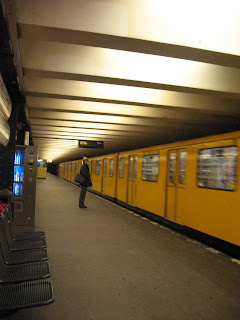The brief for Sculpture was a broad one, dealing with my existence or 'corporeality'. That in itself could mean anything, from my understanding of my existence or non-existence, to the mind or my emotions; to the reality of my body (i.e. how bodily parts organise themselves, function and cohabit). This brief however, specifically states that I deal with the five senses and/or the vital signs (i.e. blood pressure, pulse, etc).
One of the first things my tutor said, was that these two weeks are not about making art, but about conducting experimentation. I am to think of myself as a scientist and this studio is my lab.
So, now for the brainstorm. I was not to go into this with an already preconceived idea about what I was going to make, whatever it would be, it needed to be fresh, to allow me the option of exploring different avenues and letting the ideas grow out of the process - while still keeping the control.
After a group session of spider-maps and racking our brains for verbs and processes. We began to look at practising artists in the field of sculpture. Artists such as Bruce Nauman, Antony Gormley, and Damien Hirst, amongst others.
to run, to watch, to blur, to taste, to survive, to melt, to crack, to pinch, to laugh, to beat, to project, to smudge, to damage, to poison, to smash, to touch...
materials like: lead, metal, wire, fabric, paper, foam, ice, stone, slate, nails, string, people, photos, ink, glass, prints, plastic, etc
to freeze, to eat, to blow, to expand, to compress, to bend, to connect, to stain, to leave, to twist, to capture, to forget, to fade, to stick, to burn...
Sketchbook
"Cracking...I feel myself being drawn to this word. What does it mean to crack something? To crack glass, to crack a joke, to crack bones, to crack a smile, to crack under pressure..."
 |
(My brother's hand)
The cracking of the skin and the dryness and fragility of that. |
"Once I latched onto the word I knew that I would immediately have to explore the processes...experiment with the consequences of forming a crack in a substance/material..."
I must remember to research artists that incorporate the concept of/include some form of cracking in their work.
































































